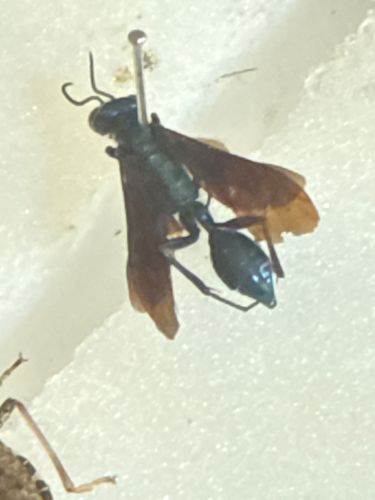Tarantula Hawk Wasp
Scientific Name: Pepsis or Hemipepsis species
Order & Family: Hymenoptera, Pompilidae
Size: 2-5 cm (0.8-2 inches) in length, with some species reaching up to 11 cm (4.3 inches) in wingspan.

Natural Habitat
Arid and semi-arid regions, deserts, grasslands, and open woodlands, mainly in the warmer regions of the Americas, Africa, Asia, and Australia.
Diet & Feeding
Adult tarantula hawks feed on nectar, pollen, and fruit for energy. The larvae are carnivorous, feeding on paralyzed tarantulas provided by the female wasp.
Behavior Patterns
Female tarantula hawk wasps are solitary hunters. They sting and paralyze tarantulas, then drag them to a burrow where they lay a single egg on the spider's abdomen. The larva then consumes the living (but paralyzed) tarantula. Males patrol for females to mate.
Risks & Benefits
Risk: Known for having one of the most painful stings among insects, though generally not medically dangerous to humans unless allergic. Benefits: They are natural predators of tarantulas, helping to control their populations in ecosystems. They also act as pollinators while feeding on nectar.
Identified on: 9/28/2025